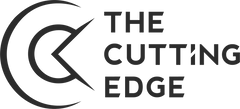
Which print process should I choose?
Which print process should I choose?
The best place to start when choosing print process is first understanding the "look and feel" that you want from your packaging.
- What do you want the customer to feel when they look at and touch the product?
- Is the quality of the finish important to you, or is it secondary to the protection of, or details on the design?
The second most important question is how many? This will guide a lot of the available options, as the setup cost for these can be a barrier to entry.
The print process decision goes hand in hand with the materials choice. It can often be a good idea to take note of products or packaging that you see day to day that make an impression on you. It’s easiest to work backwards from a real world example, and analyse why certain decisions were made by that company.
Let’s broadly look at some of the key questions and answers around these different processes. We’ve chosen a few metrics, that often come up in discussions with customers. Having a general knowledge of these can make the planning processes much smoother.
The metrics:
-
Quality Finish:
- The level of small detail that can be achieved
- High resolution print
- Chance of imperfections
- This is ignoring a certain look that you might be after.
-
Unit Cost:
- how low the cost of each item is when ordered in the ideal quantity for the process
-
Cost of entry:
- The total cost of design/tooling/setup before 1 item is produced, affecting the unit cost, and ability to order small quantities at a reasonable price.
-
MOQ:
- The general number of units to be order to make sense. This can vary based on the size of the product, as the printers will measure it by sheets.
-
Limitations:
- Some processes are better suited to more creative designs, including post-print finishes such as coatings and foilings. Other limitations can include type size, colour use, and print size.
-
Sustainability:
- The ability to recycle the finished product. This can come down to the inks used.
-
Scalability:
- The ability to produce in large quantities at repeatable quality, and expected economies of scale.
FLEXO:
Quality Finish:📦📦
Unit Cost: 📦📦📦📦📦
Cost of entry: 📦📦📦
MOQ: ~2000
Limitations: 📦📦📦
Sustainability: 📦📦📦📦📦
Scalability: 📦📦📦📦📦
The flexo look has recently had a resurgence, with it’s traditional look and simple design aesthetic. It can be a great way to apply simple branding messages to a shipping box, traditionally a plain brown box with a single-coloured image or text.
The machines used to produce these boxes run very fast, but there is a substantial investment in the initial setup/tooling that can result in high unit costs if the order quantity is too low.
However, with enough units, this can be the most cost effective finish.
LITHO:
Quality Finish:📦📦📦📦📦
Unit Cost: 📦📦📦
Cost of entry: 📦📦📦
MOQ: ~750
Limitations: 📦
Sustainability: 📦📦📦📦
Scalability: 📦📦📦📦
The lithographic or offset process is responsible for the majority of product packaging you see today. Most imagery is produced through CMYK mixing, with some machines able to print up to 10 colours in one pass.
This is the preferred choice for most consumer facing goods, as there is a high level of detail with vibrant colours.
Much like flexo, there are some setup costs that can make small orders inefficient.
DIGI:
Quality Finish:📦📦📦📦
Unit Cost: 📦📦📦📦
Cost of entry: 📦
MOQ: ~25
Limitations: 📦📦
Sustainability: 📦📦📦
Scalability: 📦📦
The digital sector has grown and grown in recent years, as the inks, quality, and speed of machines continues to improve. Digital has a huge advantage when it comes to small runs, as well as being able to produce variable data. As there isn’t as much setup cost, and minimal speed increases in a large order, unit costs don’t come down as much as the alternative print processes.
This process is best suited for <200 units, depending on size.
It can also be used to create samples or mockups for designs that will later be produced on flexo or litho machines.
In further posts we will detail the individual processes, materials that can be used, and extra finishes that can be applied to give a premium finish to the product.
